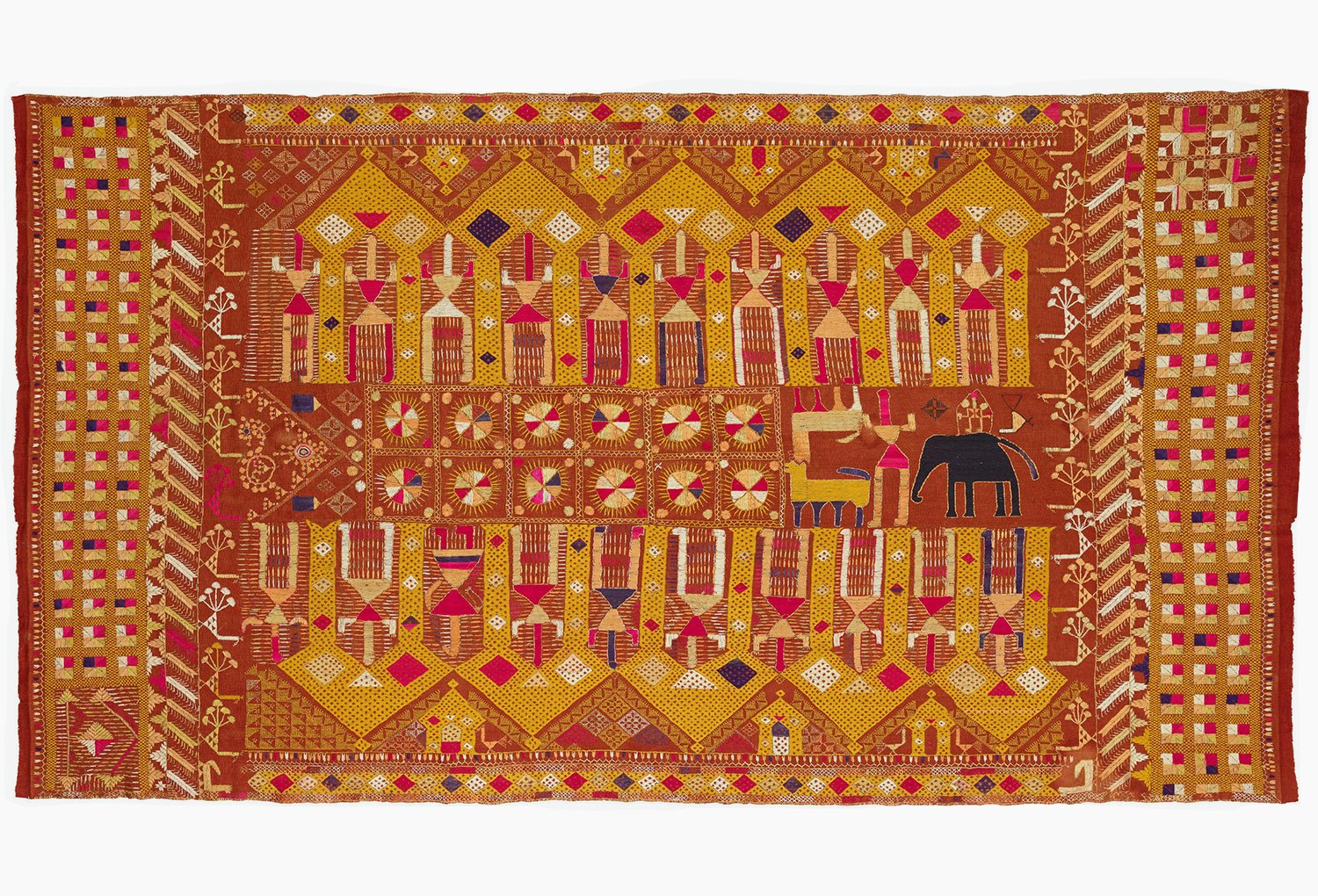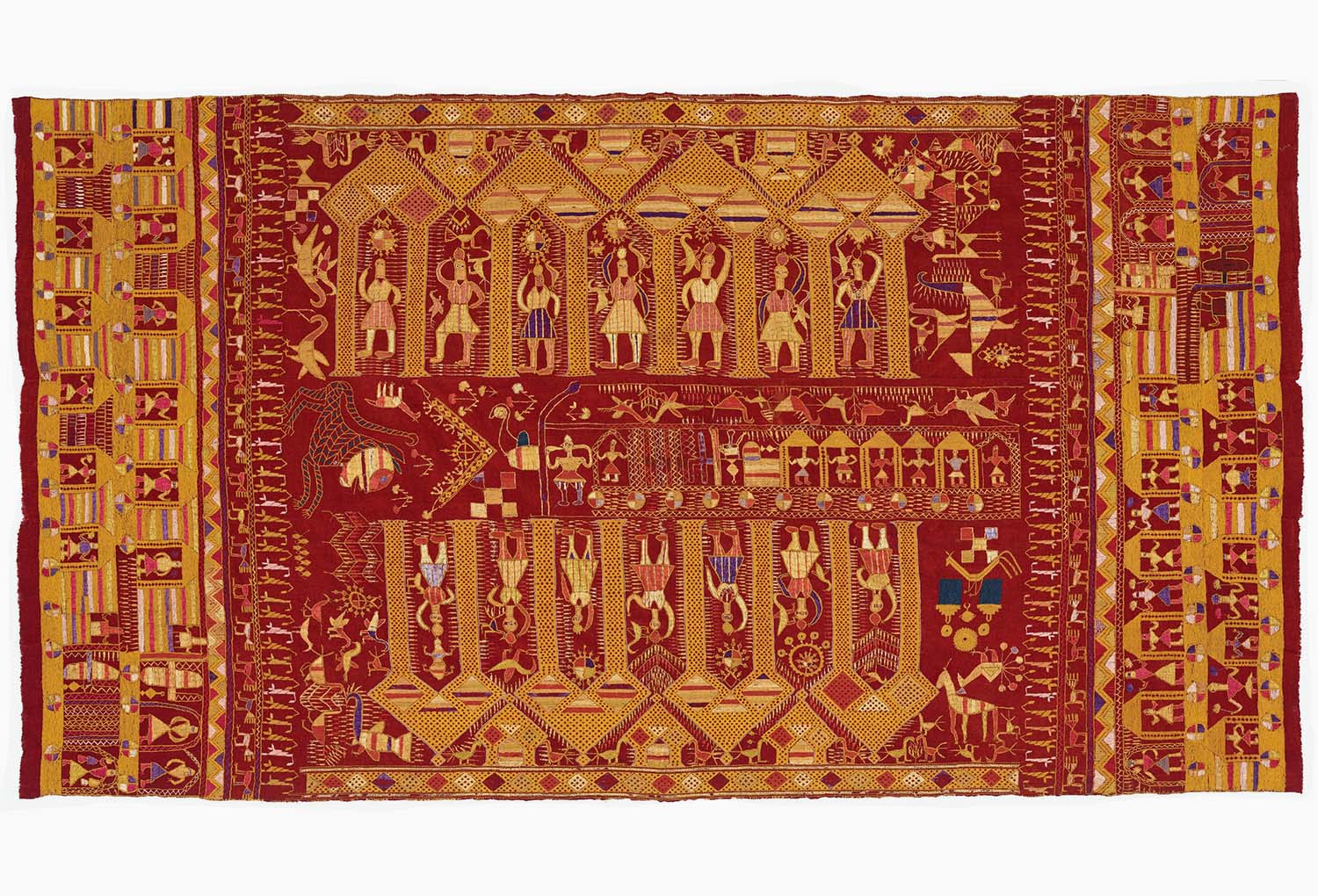ARTICLE
Darshan Dwar Phulkari
A type of phulkari typically donated to temples and gurudwaras, darshan dwar phulkari has a red base fabric embroidered with threads of various colours, most often yellow. The name of the textile translates to “the gateway (dwar) for beholding the divine (darshan).”
The embroidery is characterised by a set of columns running along the sides of the fabric, topped with arches pointing away from the centre. The space in the middle of the phulkari resembles a pathway and is populated with human and animal figures, giving it the appearance of a busy street. The borders are filled with geometric shapes, usually diamonds, stars and triangles.
The use of dwar phulkaris in religious shrines is considered to be a recent phenomenon, primarily owing to the lack of historic phulkaris in the possession of temples and gurudwaras, as well as an absence of any rituals involving them. It is also believed that the colonnade motifs in this textile may have originally referenced colonial-era buildings in Lahore, which were popular recreational venues; this may also explain the animated people and animals depicted in the centre of the fabric.
Examples of historic darshan dwar phulkaris can be found in the collections of the Philadelphia Museum of Art.
Bibliography
Our website is currently undergoing maintenance and re-design, due to which we have had to take down some of our bibliographies. While these will be re-published shortly, you can request references for specific articles by writing to hellomapacademy@map-india.org.









